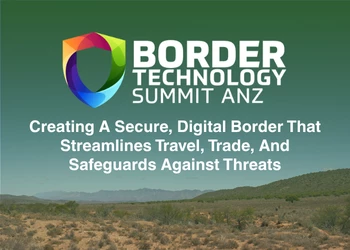GCC naval leaders call for new vessels and partnerships
Add bookmarkVersatile offshore patrol vessels could answer the increasing diversity of threats in the GCC region – but not without multinational cooperation
On patrol in the central and southern Persian Gulf. Image: NZDF
Gulf Arab states face significant challenges today, ranging from a slump in oil prices to rising incidents of domestic terrorism. However, the critical need for maritime security is one that is given precedence because of a collective dependence on seaborne trade and transport. If security of these passageways cannot be ensured, the region will be cut off from the rest of the world.
This situation naturally requires a firm response from regional maritime forces – both in terms of strategic planning and in deploying appropriate equipment.
SEE ALSO: Saudi Naval Expansion Programme II: Facts and Figures
Forming the backbone of new platforms is the offshore patrol vessel (OPV). Boasting speed, versatility and cost-efficiency, the OPV is slowly becoming a preferred alternative to the conventional corvette in many areas of the world that deal with similar maritime concerns.
As such, Gulf nations are considering an increase in OPV acquisition because a flexible platform may be the best way to address a flexible range of threats.
“New capabilities, such as patrol vessels and on board helicopters, have already had an effect off the Somali Coast, where the scale of the attacks on commercial vessels has decreased,” explained Captain Mustafa Kanafani, an independent maritime expert and former representative of the League of Arab States to the UN’s International Maritime Organisation (IMO).
The key threats
The most prevalent threats facing maritime security within the Arabian Gulf can be categorised into three core issues.
First is political instability. In the event of conflict, adversaries – such as Iran’s Revolutionary Guards Corps – are capable of carrying out sabotage, deploying mines, interfering with shipping and attacking offshore facilities or maritime traffic that belong to GCC nations.
The second danger is that terrorist groups (some of which are state-sponsored) may hijack ships or use small, fast boats to attack offshore facilities and ports. An unstable Yemen has seen a risk of Houthi-led insurgents developing a capability to close off the Bab el Mandeb, while the expansion and continued presence of ISIL in the Sinai has seen security tighten around the Suez Canal. Somali piracy has subsided in recent years but analysts foresee an upswing of activity as multinational naval support withdraws from the region.
Following on from this challenge, there is the issue of securing offshore oil and gas platforms, which are intrinsically vulnerable to terrorist attacks but require persistent protection and rapid response.
Overall, the scale and diversity of maritime threats represent a highly complex, multidimensional challenge for the GCC that looks likely to grow with time.
OPV response
In a recent survey undertaken by Defence IQ, an overwhelming majority of naval professionals confirmed that investment into new OPVs – though undeniably a significant expense – is more cost-effective and strategically sound than modernising or adapting current vessels.
Over two thirds of respondents also stated that OPVs, can be sufficient enough to deal with their current range of combat threats – though countering high-end capabilities still requires the involvement of conventional warships.
For those reasons, momentum is steadily building towards new OPV programmes in the Arabian Gulf.
The UAE, for example, is currently preparing to receive the second of two newly-built Arialah-class multipurpose OPVs from Abu Dhabi Ship Building, with the first vessel having been delivered in February 2017.
The 67m Arialah boasts Damen’s ‘sea axe’ hull – combining a chined hull and deep-V bottom – that provides very low resistance and vertical acceleration, enabling smooth, high speeds and superior seakeeping. The vessels also provide a comprehensive weapon, sensor and command suite.
Saudi Arabia’s Border Guard has also been undertaking a number of big development projects, including the acquisition of almost 50 fast boats (from Germany) and supporting electronics systems.
Strategic cooperation
Procurement may be seen as a necessary expense when keeping naval and maritime force readiness at their peak but there is also a need to balance this with a constant study of the environment.
“The shipping industries today offer very high-tech fast patrol vessels,” said Rear Admiral Dr Ali Alshuaibi (Ret.), formerly of the Saudi Arabia Coast Guard, “but the early warning of maritime threats are more important than platforms when it comes to actually deterring adversaries rather than merely responding to them. That requires decisions based on joint risk assessment.”
This is not just a case of staying abreast of emergent dangers. There must also be consistent consideration of the opportunities provided by partners and allies.
“If it’s in the interest for regional nations to operate cooperatively once new technical systems have been purchased, it’s clear that it is also in their interest to buy cooperatively, as well,” said Capt Kanafani.
This collaborative-customer approach could ensure an essential interoperability and integration of regional systems across surveillance craft, patrol land stations and helicopters. While not necessarily complicated, it does require both national and regional policies to be formed.
“At present, security cooperation across the GCC is limited, but it can be achieved if our nations are willing to form a truly joint strategy,” said Dr Ali.
“Meanwhile, participation of civilian organisations is subject to the standards of IMO Regulations and countries must observe that, but integrated management can offer solutions on some important issues.”






















